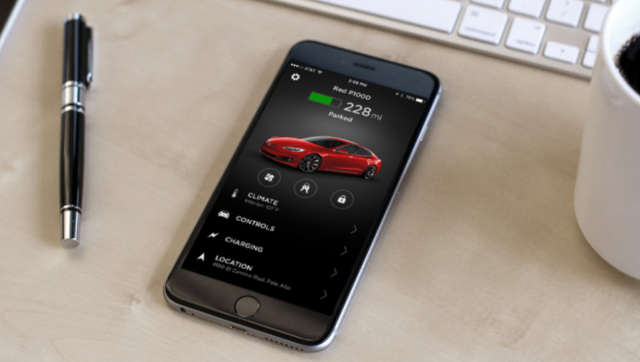
Vivo
Now that we're well into 2020,it's about time Vivo gave us its annual update on the APEX concept line which,in its past two generations,had given us a taste of what was to come in the smartphone world -- namely in-display fingerprint reader,pop-up selfie camera,near-buttonless design and more. In the case of this 5G-enabled APEX 2020,it's all about the cameras,display and wireless charging.
Starting off with the 16-megapixel periscopic camera on the back,it offers a continuous optical zoom range of 5x to 7.5x. This breaks the previous 5x upper limit on the likes of the Huawei P30 Pro and the Oppo Reno 10x Zoom,and will likely produce results that are almost as good as,if not better than,the 10x hybrid zoom offered by both devices. What's more impressive is that this camera module is only 6.2mm thick,which is slimmer than the 6.76mm-thick component on the Reno 10x Zoom.

The 48-megapixel "gimbal camera" below the zoom camera is rather fascinating. As the name suggests,Vivo managed to stuff some sort of "gimbal-like structure" into this camera,so that "it achieves optical stabilisation in the front-back and left-right inclined directions with enhanced performance." This design was actually inspired by the chameleon's eyeball,which steadily rotates in a way that helps the reptile lock onto its prey. Think of it as OIS (optical image stabilization) on steroids,if you want,with Vivo's lab tests claiming that compared to the traditional OIS,this implementation extends the stabilisation angle by 200 percent.
You may recall that last year's APEX lacked a selfie camera. Well,just as I predicted,Vivo has indeed been working on under-screen camera technology as well. Much like Oppo's experimental implementation,when the hidden 16-megapixel front camera is activated on the APEX 2020,the screen area right above the camera becomes transparent. This part also features much larger display pixels to allow for better light transmittance -- in this case,it's six times that of the normal parts of the screen.
The rest is then handled by algorithms to make up for any optical interference,and it can also use 4-in-1 pixel-binning to boost sensitivity. I wasn't convinced by the results I got on Oppo's prototype device back in December,but if Vivo is still betting on this technology,then maybe there's still hope.
In addition to camera hardware,this concept phone also has the ability to remove background passersby while filming in real time,meaning strangers will no longer be able to photobomb you,be it intentional or not. Vivo claims that this feature works well "no matter how complicated the background environment is," so we'll believe it when we see it.
There's also another feature called "Voice Tracking Auto-Focus," which makes use of the phone's three microphones -- two for picking up sound and one for acoustic "auto-focus" -- along with image recognition to better focus on the audio of your desired subject. This sounds very much like the "Voice Bokeh" feature on the recent LG V60 ThinQ 5G and is somewhat similar to Samsung Galaxy Note 10's "Zoom-in Mic."

Following last year's waterfall screens on Vivo's very on NEX 3 5G and Huawei's Mate 30 Pro,this year the APEX 2020 has brought us a "120-degree FullView Edgeless Display." It's rather self-explanatory: this 6.45-inch 2,330 x 1,080 AMOLED panel wraps around both edges at 120 degrees,thus beating the 88-degree bend on the waterfall screens and rendering the bezels truly invisible when viewed from the front. In fact,you can even just about see this screen's two glowing edges from the back of the phone.
As cool as this looks,there's the inevitable question of whether this would increase the chances of damaging the screen -- along with the virtual pressure-sensing buttons on the sides -- when dropped. Perhaps it won't make much of a difference compared to existing curved screens (except for Xiaomi's indefinitely-delayed Mix Alpha),but such an exaggerated bend does make it a lot more difficult to find suitable screen protectors,if any.
Another new feature hidden underneath the screen is Vivo's third-generation Screen SoundCasting technology,which eliminates the need of speaker holes and thus improving protection against liquids plus dust. Rather than casting sound through the glass body like on last year's APEX,this time it's the screen that's doing the job (remember the LG G8?),and apparently this new solution delivers better bass as well as sound directivity.
One problem I had with the APEX 2019 was the use of pogo pins on the otherwise clean glass body. Luckily,those are gone on the APEX 2020 thanks to Vivo's impressive "Wireless Super FlashCharge 60W." Until now,the fastest wireless charging available out there is Xiaomi's 30W solution,and Oppo has also shown off its very own 30W wireless VOOC demo,with Huawei's 27W solution for the Mate 30 Pro being the runner-up. 60W is obviously a huge leap from those figures,though for some reason,Vivo only used a 2,000mAh battery as an example for charging time: 20 minutes. We can't just double this figure to get an estimation for a proper phone battery,but knowing that Xiaomi's 30W solution takes 69 minutes to fully charge up a 4,000mAh cell,chances are Vivo's upcoming tech will take much less than that.
It should be no surprise that the APEX 2020 runs on Android 10 and is powered by Qualcomm's latest and greatest Snapdragon 865 chipset,which is paired with a 5G modem. Not that this matters since the device will never hit the market,but it packs 12GB of RAM and 256GB of storage space -- maybe those are the bare minimum for this year's flagships,in Vivo's view. Hopefully we'll be seeing some of these next-gen features on a new smartphone some time this year.











 加载中,请稍侯......
加载中,请稍侯......
Comments